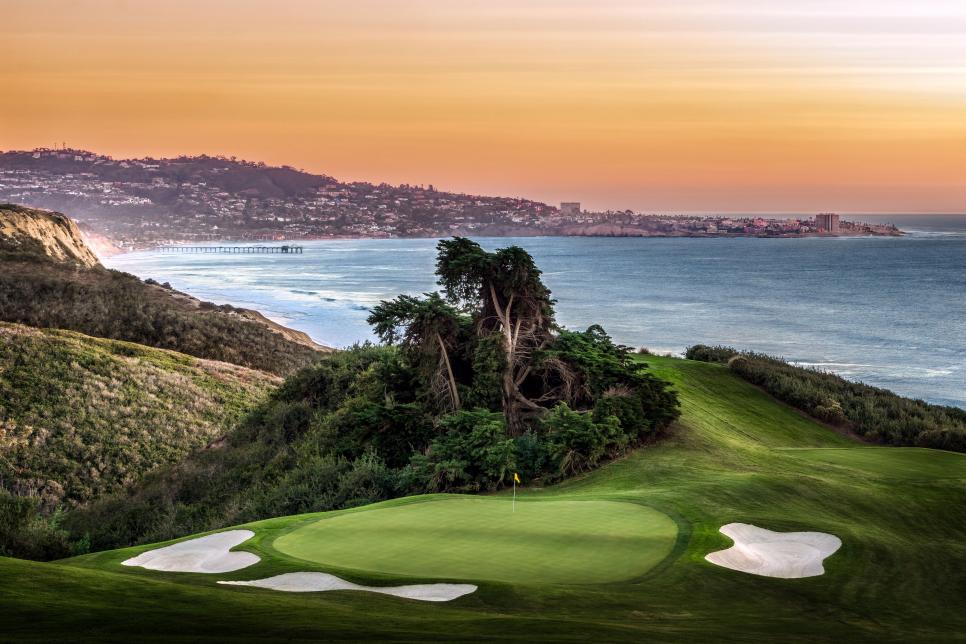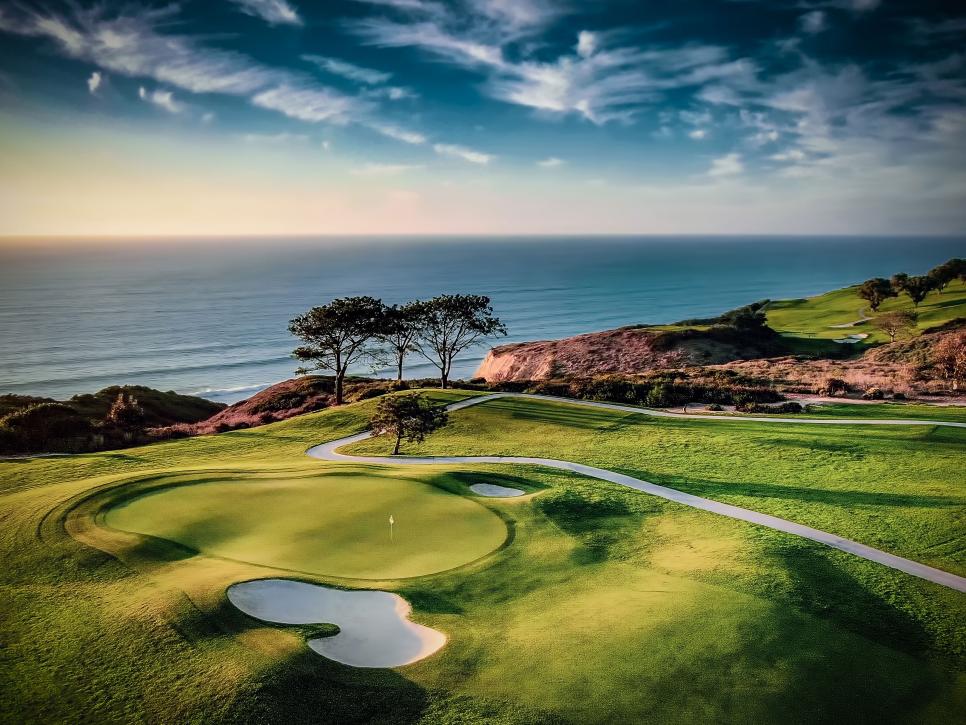Courses
How Torrey Pines North is able to test tour pros without confounding its public-course regulars

Mark Degnan
LA JOLLA, Calif. — In 1968, during the heyday of celebrity golf pro-ams, singer Andy Williams lent his cardiganed imprimatur to the San Diego Open, adding a sheen of gold and platinum to the 17-year-old tournament.
The branding accompanied the move to Torrey Pines, a youthful but decidedly more scruffy-than-golden public facility located atop the Pacific headlands at the eponymous state park. The regal Tom Weiskopf, undaunted by the egalitarian nature of the golf course, won the event that year, the first of his 16 PGA Tour titles, when he eagled the 18th hole of the South Course.
In those days the differences between the abilities of amateur players and professionals, while drastic, were relatable. Now the gulf between the skills of the average golfer and the average PGA Tour player has never been wider. The games they play don’t recognize each other.
That means, if the brute power and acute ability of the professional player to spin the ball are to be truly measured in tournament format, the golf courses must be very specifically conditioned and devised.
And that’s the conundrum of the North Course at Torrey Pines, still an egalitarian everyday course that then must present formidable competition the one day a year the pros attack it during the Farmers Insurance Open (contestants alternate Thursday and Friday rounds between the North and South courses).
How exactly can a golf course be docile enough to efficiently process nearly 85,000 rounds a year be something other than a rubber chicken for the world’s best?
The answer is found in the green surfaces. When Weiskopf, now playing the role of golf course architect, revamped the North Course prior to the 2017 Farmers, his principle charge was to keep the play as fun and frictionless as possible by enlarging greens and removing bunkers (he also flip-flopped the nines). Nearly every putting surface, however, possesses at least one “X” hole location that requires extreme control or finesse to access.
Most of these hole locations are positioned toward the rear and high sides of the greens, usually perched above a tier, crown or slope. A back-right hole location at the par-5 fifth, for instance, set on a ridge guarded by a V-shaped depression that funnels balls away, can only be held with a deft approach, a challenge intensified if played from the three- to four-inch kikuyu rough during the tournament.
A back-center cup at the short par-4 seventh can be placed near a small bulge that deflects even wedge shots away, while a trough creeping into the left center of the 10th green reroutes balls into a side chipping area when they come up short of a back-left pin.

Mark Degnan
Several front hole locations are equally extreme, particularly a front-left section at the par-4 sixth that resembles the size and shape of a pitcher’s mound. The beauty of these subtle subregions is that they aren’t punishing: Chipping and two-putting to these pins across the large bentgrass greens (the South Course’s greens are poa annua) is manageable. It’s only when the player is thinking birdie and trying to hit the ball close that they become taxing.
The North Course’s setup can change dramatically by using some, many or all of these protected areas. Such flexibility of hole locations is a much more cerebral and inviting way to affect the playability of a course, for all caliber of players, than reflexively growing rough and narrowing fairways.
Architecture doesn’t have to be complicated to be effective. Often a single, well-placed feature can command the full attention of even a PGA Tour player. At least for one day.

